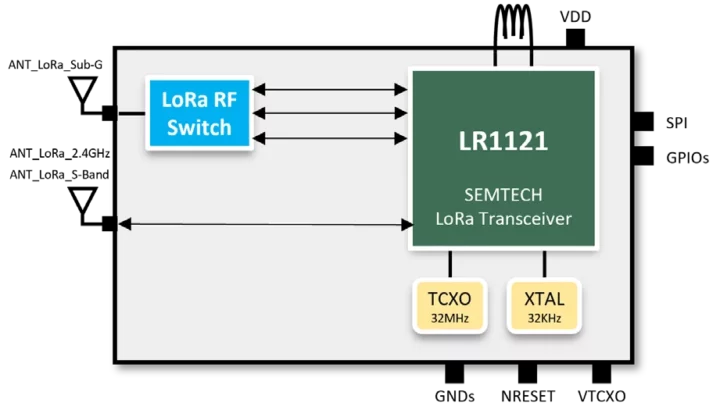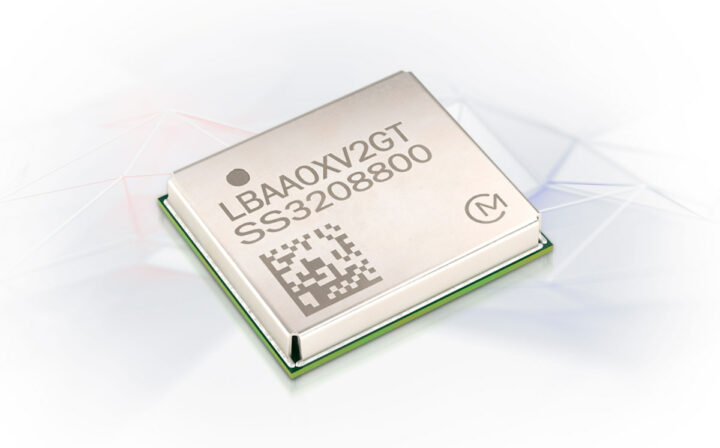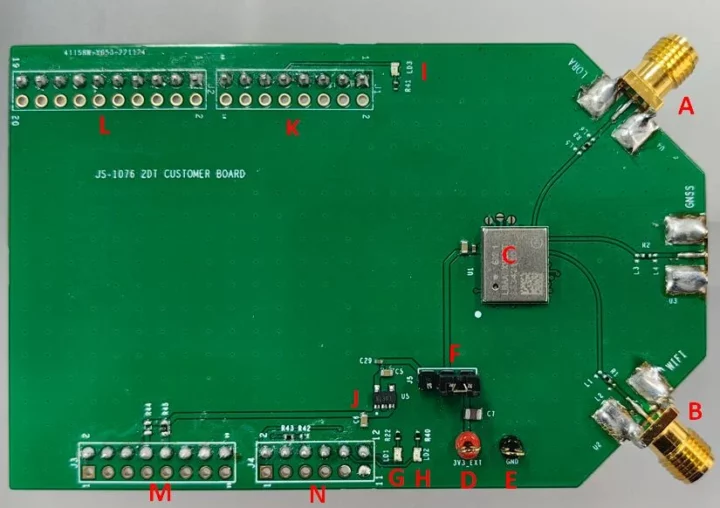Murata Type 2GT module is a tiny multi-band, low-power radio LoRa module based on the Semtech LR1121, the successor of the LR1120, that supports 860 to 930 MHz and 2.4GHz ISM bands, as well as the 2.1 GHz Satellite S-Band meaning it can work globally.
The Type 2GT module measures just 9.98 x 8.70 x 1.74mm and is built on a PCB housed in a metal case and packaged as a land grid array. It combines the Semtech LR1121 RF transceiver IC, a thermally compensated crystal oscillator (TCXO), a second 32KHz crystal, an RF switch, and an RF matching network.
Murata Type 2GT module (LBAA0XV2GT-001) specifications:
- Transceiver – Semtech LR1121 LoRa transceiver
- LoRa frequencies
- 860 to 930 MHz (ISM)
- 2.4 GHz ISM
- 2.1 GHz satellite S-Band
- Technology – LoRa, LR-FHSS (Long Range – Frequency Hopping Spread Spectrum)
- LoRa frequencies
- 32 MHz TCXO for maximum frequency accuracy
- Peripheral I/F – SPI and GPIOs
- Low power consumption
- Supply Voltage – 1.8 to 3.6V DC
- Package – 9.98 x 8.7 x 1.17 mm LGA package
- Temperature Range – -40°C to +85°C
- Certifications – FCC / CE / IC (Canada) / TELEC (Japan); RoHS compliant

Murata expects the module to be used in a range of IoT applications such as smart agriculture, Industrial and environmental sensing, building and home automation, asset tracking, utility metering, as well as remote-controlled toys and drones. LoRa is a low bitrate radio, but support for the 2.4GHz ISM band enables higher data rates and common channel plans across the globe and avoids the duty-cycle limitations imposed on sub-GHz communications by European standards.
The Japanese company also provides the Type 2GT evaluation board (EVB) with two SMA antenna connectors for Sub-GHz and 2.4GHz/2.1GHz, Arduino headers, and a 3.3V external power supply that is designed to work with the STMicro NUCLEO-L476RG development board and the STM32Cube Programmer tool.
Murata says “samples are available now with mass production scheduled to begin at the end of March 2024” in their press release dated April 2, 2024, so I guess that means mass production has already started… Further information may be found on the product page.
Thanks to TLS for the tip.

Jean-Luc started CNX Software in 2010 as a part-time endeavor, before quitting his job as a software engineering manager, and starting to write daily news, and reviews full time later in 2011.
Support CNX Software! Donate via cryptocurrencies, become a Patron on Patreon, or purchase goods on Amazon or Aliexpress






